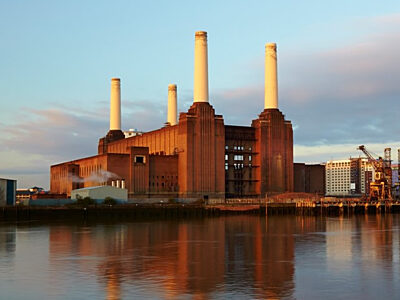Brickwork Evaluation of Battersea Power Station
The construction of Battersea Power Station began in 1927 and the final chimney was added in 1955. Since its closure in 1983, little had been done by way of repairs and some elements had been removed. The structure was being redeveloped for mixed use and included residential accommodation in the annex areas on either side of the building and the wash towers.

The challenge
Lucideon was engaged to take representative samples of the brickwork, evaluate the current moisture content and distribution, and characteristics of the brickwork in various parts of the building. Subsequently, Lucideon appointed Leeds Beckett University to carry out hygrothermal modelling to understand the movement of moisture in the walls over a one-year period when subjected to typical weather conditions and a harsh temperature and relative humidity regime internally. The conditions were then analysed to indicate the likelihood of internal surface condensation and mould growth, and frost attack on the external surface.
What we delivered
Sampling and Testing
At the original site visit in May 2014, it was noted that the brickwork was formed of large areas of uniform quality brickwork with no excessive staining or local failures. Each elevation could be notionally divided into large panels and considered 'uniform' in the sense that just two areas would be chosen for sampling. One sample would be taken at a high level and one at a low level to cover one more and one less exposed condition. Tests were carried out to determine all the characteristics required as inputs to the hygrothermal model. Leeds Beckett University used WUFI® software, which is underpinned by extensive research and has been validated against physical measurements taken in laboratory and field conditions.
The Hygrothermal Modelling
The initial moisture content and distribution was taken from the cored samples for each location. At the request of the building insurers, the internal conditions were set to standard industrial kitchen conditions. The external conditions were those of a typical year derived from long-term measure values and input as hourly data to the simulation.
Value to the client
The client was making significant investment in the project which included very high-end retail and residential accommodation. The tests and modelling indicated that with some modification to the internal relative humidity from that assumed, there were unlikely to be moisture-related issues in either type of space. The air-conditioned environment would more than adequately eliminate risk and hence no extra costs were to be incurred due to unexpected moisture effects in the fabric of the building.
